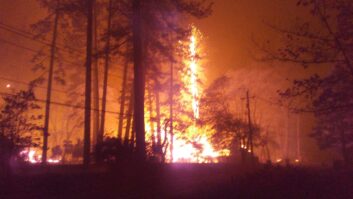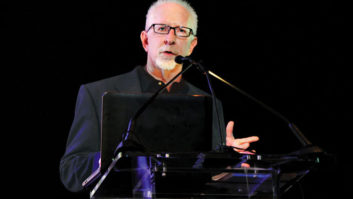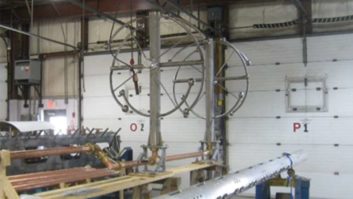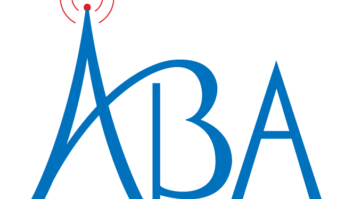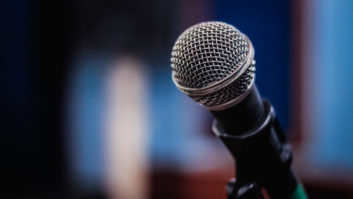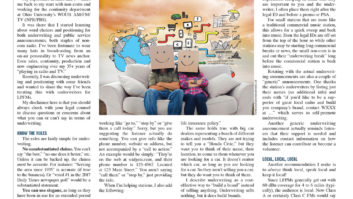
Sign for KBOO(FM), Portland’s listener-supported community radio station. Radio practitioners, theorists and fans convened in Portland, Ore., in April to investigate the theme, “What is Radio? Exploring the Past, Present & Future.”
Unlike many radio conferences I’ve attended, “What is Radio?” had an academic focus. Hosted by the University of Oregon School of Journalism and Communication, the conference largely comprises panels of academics from all over the world, with journalists, writers and working radio professionals speckled in.
The event was accessible to a non-academic, radio-loving audience, though. It was part of an ongoing series of “What is?” conferences (the first two focused on film and television); and the topic of radio was chosen, according to co-organizer Janet Wasko, “because of changes going on with radio, lack of attention given to the medium, and the intense interest and expertise of … colleagues, Peter Laufer and Michael Huntsberger.”
For me, it was an incredible few days of in-depth, intellectual conversations about a wide array of radio-themed topics.
AUDIO THAT CRAWLS INSIDE YOUR HEAD
The conference, held at the George S. Turnbull Portland Center, kicked off with an evening keynote by reporter and talk show host Charles Jaco. He discussed the role of storytelling in radio and asked the audience to consider what makes a news story a “radio story” vs. a “television story.”
As an example, he cited the famous example of the 1960 Kennedy-Nixon presidential debate. Among radio listeners, Richard Nixon was generally thought to have won, but among television viewers, John F. Kennedy was pronounced the debate winner.
Jaco explained that on television, Nixon “appeared shifty-eyed” and that this “visual narrative” is what caused him to fail among viewers. According to Jaco, how stories are told on radio is key. Without a narrative, radio isn’t much more than what we get with an iPod.
Narrative, Jaco continued, is everything to religious stations, talk stations and sports stations; but he feels it has fallen by the wayside at many commercial radio stations. He argued that much of today’s great storytelling on radio occurs on noncommercial stations.
A feature of great storytelling is that the listener is an active part of the process. In television, on the other hand, “nothing is left to the imagination.” An absence of visuals can actually be a strong suit because “radio storytelling crawls inside the head of the listener.”
A MULTI-FACETED MEDIUM
During the bulk of the conference, several simultaneous panels competed with one another, including sessions about radio in India, economic and regulatory issues, radio for education, Spanish-language radio, college radio, the impact of the 1996 Telecommunications Act and the future of radio. Presenters were asked to begin their talks with an anecdote about their first experience with radio, so throughout the conference we were treated to personal stories about why radio can be alluring.

OPB’s David Miller interviews Love Canal activist Lois Gibbs in front of a live audience. University of Wisconsin-Milwaukee lecturer and broadcast veteran Christopher Terry shared a harrowing tale about his refusal to leave his college radio station during a tornado, telling the crowd that campus police dragged him away kicking and screaming.
At least two presenters mentioned an early fascination with Dr. Demento.
One of the more riveting panels covered the development of a national prison radio network in Britain. Phil Maguire of the Prison Radio Association talked about how the network’s award-winning programming helps to rehabilitate prisoners. Although its programs are heard only within the confines of prison, we learned that one program, “The Victim’s Voice,” was rebroadcast over BBC Radio 4. More information about the network can be found at www.prisonradioassociation.org.
WEIRDOS, MISFITS AND MAD GENIUSES
On a less serious note, Phil Oppenheim gave a fascinating presentation about the aesthetics of trash radio. He admitted that he’s not a radio scholar but confidently stated, “I know a lot about trash.” In his talk, Oppenheim drew connections between radio and the world of cult and exploitation film.
According to Oppenheim, trash often is aligned with camp, “losers and misfits,” and “mad geniuses.” Translating that to radio, he delved into the category of “psychotronic radio” and also profiled some “weirdo” DJs who could be considered to be a part of trash culture.
Some were connected with the beatnik scene, like Al “Jazzbo” Collins, and others were pranksters and free-form radio pioneers, often experimenting during late-night radio shifts (including talk show host Long John Nebel).
A few panels looked at experimental radio. Daniel Gilfillan discussed radio as an “artistic medium” and talked about some intriguing live performances and broadcasts, including one in which hypertext triggered sounds over the radio so that home listeners could influence the broadcast by clicking on Web links.
John Barber and his students shared the output of a class that focused on exploring the concept of Internet radio as a new form of media. Students created radio drama, radio art (including a piece called “Portland Soundscape” that captured ambient sounds of the city) and an audio social network. Projects can be heard on the Radio Nouspace website, http://radionouspace.net/.
NOSTALGIA AND FORECASTS
The conference delivered on its promise of covering the “past, present and future of radio,” with many panels honing in on particular periods of radio history.
Thea Chroman chronicled the early history of Oregon radio station KOAC(AM). Looking at the station’s programming between 1923 and 1958, Chroman described the format as “profoundly practical,” as KOAC aimed to provide extension education and agricultural information for its rural listeners.
Another historical paper, Aidan Moir’s presentation about radio print advertisements, took a look at how radios were marketed to consumers from the 1920s through the 1960s. I was charmed by her description of early ads for radios, which she said portrayed a “sublime, enchanted fantasy world.”

Crowd at the ‘What Is Radio’ conference. As far as the future, panelists offered mixed outlooks.
John Anderson, whose forthcoming book “Radio’s Digital Dilemma” outlines the history of digital radio, took a stance heavily against HD Radio, calling it a “technology of hubris, developed out of fear and self-interest.”
August Grant and Jeff Wilkinson gave a “Radio 2030” presentation, in which Wilkinson alluded to the myriad definitions of radio that were bandied about throughout the conference, giving a nod to radio’s enduring nature, saying, “radio is a shape-shifter.”
Grant and Wilkinson offered a few potential visions for the future of radio, including both pessimistic (radio is irrelevant, so it stagnates and is terminated, etc.) and optimistic (radio reinvents itself, adapts and survives, etc.). They suggested that radio in the future might become more local, with “innovation at the fringes.”
AN ETHEREAL NATURE
The conference concluded with a trippy plenary presentation by John Durham Peters, titled “Radio’s Nonhuman Penumbra.” In case you’re scratching your head, as I was, here’s the skinny: Peters described radio as “one of the most existential media,” “highly poetic,” “deeply philosophical” and possessing a “wonderful non-human dimension.”
According to Peters, the magic of radio is connected with the temporal nature of sound, and since sound has to “vanish instantly” and is “always disappearing,” it has been challenging for humans to document it. His presentation took a cosmic turn when he began to talk about radio signals in meteors, thunderstorms and the Milky Way.
As I tried to wrap my head around all of the possibilities, I was struck by one particular comment of his, that “alongside the spectrum, there are specters.” It may have been the best thought to leave the conference with, as it captured the mystery, magic and mythology of radio.
Although the conference allowed for participants to explore myriad definitions, uses and futures for radio, perhaps what it all came down was the intersection between radio’s human and inhuman qualities. From its earliest days, radio captured our imagination as music, news and entertainment magically drifted across the miles through speakers in one’s own home.
Radio has been an educational tool, a portal to distant lands, an escape, a friend and a lifeline during times of crisis. For radio practitioners, it can also be a lot of fun. The conference left me with a profound sense that radio is dynamic, ever-changing and multi-faceted. Its fans, who populated the conference, are passionate evangelists for its ongoing relevance.
Jennifer Waits is a writer, college radio DJ and independent radio scholar; she presented a paper about the history of student radio at Haverford College at the conference. She contributes to the blogs SpinningIndie and Radio Survivor.





